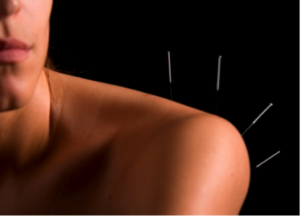Dry Needling Q&A
Common Questions about Dry Needling Answered:
Q: How many needles are you going to use?
A: Depends on the area to be needled and how you feel about needles; as little as two needles to as many as 10. For problems such as sciatica more needles are used in order to go along the nerve path. Very specific pains can be targeted with one needle.
Q: How big are the needles?
A: Again it depends on the area. Larger muscle groups like the gluts/buttock muscles require larger needles in order to target the right tissues. Small areas like the hands/carpal tunnel use smaller needles. The needles are single use and are never inserted into the body more than once.
Q: Does it hurt?
A: Sometimes there is a picking sensation when the needle goes in but there can be little to no pain. When the needles are in the body there can be a dull aching sensation, a heavy sensation, or a spreading of warm; in some locations there is no pain or sensation at all. The response to the needles varies from person to person. When the needle comes out there is often no pain.
Q: What should I expect during a dry needling session?
A: Your therapist will evaluate you and determine where the needles and how many will be placed. You will then be put in a comfortable position and the needles will be placed. The needles will stay in place from 5-15 minutes depending on your condition and tolerance. During the session the needles may be manipulated which means turned in order to further stimulate the tissue. The needles will then be removed.
Q: What should I expect after having a dry needling session?
A: Some people have an aching sensation or soreness after dry needling which typically resolves within 24-48 hours. After which the muscles will feel looser or the pain will be diminished. In order to help minimize soreness it is suggested that people drink plenty of water and perform gentle stretching.
Q: Who should NOT have dry needling?
A: People on anticoagulants or blood thinners can have needling but certain precautions are taken by the therapist. People with seizure disorders, significant muscle tone related to neurological injuries, women who are pregnant, and people who are afraid of needles should not have dry needling as well as areas that have poor circulation or have open wounds should not be needled.
Q: What are some of the complications of dry needling?
A: When being Dry Needled by a certified therapist there is minimal risk with treatment. Common complications include minimal bleeding, bruising, soreness, fatigue, lightheadedness, or fainting. There is rarely any serious side-effects but ask your physical therapist if you are concerned.
Call Physio today to schedule an appointment with Katherine Hendrick, Physical Therapist or to learn more about Dry Needling. (828) 348-1780.

